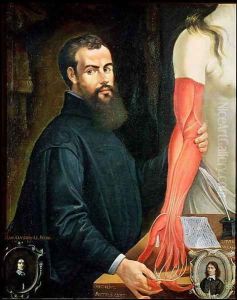Pierre Poncet Paintings
Pierre Poncet was a French sculptor known for his sleek, modernist works that often incorporated smooth, flowing lines and abstract forms. Born in 1891 in the town of Orchamps-Vennes in the Doubs department of France, Poncet's early life and upbringing remain relatively undocumented in the annals of art history. However, it is known that he developed an interest in art at a young age and pursued his passion through formal education and training.
Poncet's work was heavily influenced by the artistic movements of his time, particularly Art Deco and Modernism, which were characterized by an emphasis on abstraction and the use of industrial materials. He gained recognition in the 1920s and 1930s for his sculptures that often played with balance and rhythm, creating a sense of movement within static forms. His works were typically made of materials such as stone, bronze, and marble, and he was adept at manipulating these mediums to create polished surfaces and elegant, elongated shapes.
Throughout his career, Poncet exhibited his work in various salons and galleries, both in France and internationally. His pieces were well received, and he was considered part of the avant-garde movement in sculpture. Despite the appreciation his work garnered, Poncet maintained a relatively low profile compared to some of his contemporaries, and as such, he remains a lesser-known figure in the history of modern sculpture. Pierre Poncet's contributions to the field, however, are recognized by those who study the development of modernist sculpture in the early 20th century.
Poncet's artistic career was interrupted by the outbreak of World War II, but he returned to his craft after the war's end. His post-war work continued to reflect his interest in form and abstraction, although there was a noticeable shift in his approach and style, possibly reflecting the changed world after the war. Pierre Poncet passed away in 1953, leaving behind a body of work that, while not extensive, is valued for its contribution to the evolution of modern sculpture. His sculptures can be found in various public and private collections, and they continue to be studied and appreciated for their aesthetic qualities and historical significance.
